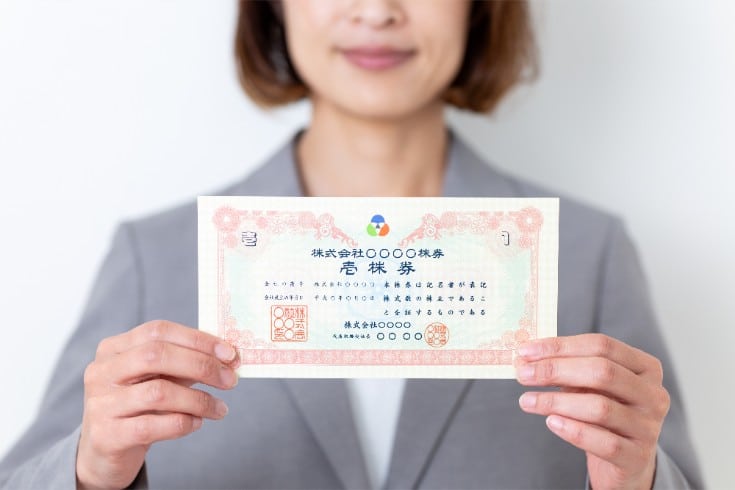Explanation of Neighboring Rights under Japanese Copyright Law

The intellectual property legal framework in Japan not only protects the rights of those who create works, namely the “creators,” but also safeguards the rights of those who play a crucial role in transmitting these works to the public, referred to as “transmitters.” This dual protection structure forms the foundation of Japan’s content industry and aims to promote both creative activities and the dissemination of culture. The Japanese Copyright Law defines the rights granted to creators as “copyright,” while distinguishing the rights granted to transmitters as “neighboring rights.” This fundamental distinction holds significant importance for companies operating in the media, entertainment, and technology sectors. For businesses involved in any aspect of content, such as film production, music distribution, and online platform management, understanding only “copyright” is insufficient and can entail serious legal and financial risks. The purpose of this article is to provide a clear, legally grounded analysis of the neighboring rights held by performers, record producers, and broadcasters/cablecasters under Japanese Copyright Law. These rights are not merely legal constraints but valuable commercial assets that can be the subject of transactions and licensing. This article will also detail how these rights can impact business strategies from a managerial perspective.
The Basic Concepts of Neighboring Rights Under Japanese Copyright Law
Neighboring rights are a category of rights defined in Chapter 4 (Articles 89 to 104) of the Japanese Copyright Law. This law aims to protect entities that make essential contributions to the transmission of works, specifically including the following four parties:
- Performers
- Record producers
- Broadcasting organizations
- Wire broadcasting organizations
One of the important principles adopted by Japanese Copyright Law is the “principle of formality-free establishment,” which means that, like copyright, neighboring rights do not require any procedures such as registration with administrative agencies for their creation. Rights are automatically generated at the moment a performance is executed, a sound is fixed on a record, or a broadcast is made.
The existence of these neighboring rights presents unique challenges in business operations. For example, even a single commercial music track involves multiple overlapping rights. When a company wishes to use a song as a soundtrack for a movie, it must first obtain permission for the ‘copyright’ from the lyricist and composer. In addition, the ‘neighboring rights’ of the artist (performer) who sang or played the music, as well as the record company (record producer) that recorded the performance and produced the master record, must also be obtained. Thus, to use a piece of content, complex rights transactions must be conducted with multiple rights holders. If one neglects to handle any one of these rights, it could lead to serious consequences such as the halting of the entire project or claims for damages. Therefore, it is imperative for management and legal departments to conduct thorough risk management in advance, based on the understanding of this ‘layered rights’ structure.
Rights of Performers Under Japanese Copyright Law
Japanese Copyright Law defines ‘performers’ as actors, musicians, singers, dancers, and others who act, dance, perform, or sing works of art, granting them rights to protect both their personal and property interests. These rights safeguard their contributions by protecting both moral and economic interests.
Moral Rights of Performers
The moral rights of performers protect their personal and individual interests and are inalienable rights exclusive to the performer. There are mainly two rights included in this category.
One is the right to be credited. Article 90-2 of the Japanese Copyright Law ensures that performers have the right to decide whether their real name or stage name is to be displayed when their performance is presented. However, users have the right to omit such credit when the purpose and manner of the use of the performance do not harm the performer’s interest in being identified as the performer or when it is deemed not to contravene fair practices.
The other is the right to maintain the integrity of the performance. Based on Article 90-3 of the Japanese Copyright Law, performers have the right to prevent any alteration, cutting, or other modification of their performance that could damage their honor or reputation. It is important to note that the scope of protection for this right is more limited than the right to maintain the integrity of a work granted to authors under Article 20 of the Japanese Copyright Law. The author’s right is a strong right that prohibits any alteration against the author’s will in principle, whereas the performer’s right to maintain integrity is limited to cases where the alteration would damage their “honor or reputation.” This difference takes into account the essential nature of editing in media production. Due to this legal distinction, production companies can edit with greater discretion than they can alter an author’s work, as long as it does not objectively harm the performer’s honor or reputation. This means that legal risk assessments can be based on the objective standard of “infringement of honor or reputation,” rather than the subjective “intentions of the performer,” enhancing legal stability in business decision-making.
Economic Rights
Performers also possess exclusive economic rights to control the commercial use of their performances. These include the right to record or videotape their own performances (Article 91 of the Japanese Copyright Law), the right to broadcast or cablecast their performances (Article 92), the right to make their performances available to the public via the internet or other means (Article 92-2), and the right to transfer recordings or videotapes of their performances to the public (Article 95-2). Regarding the right of transfer, once a recording or videotape has been legally transferred, the right is exhausted, and the performer cannot control subsequent resale or distribution.
There are very important exceptions to these rights in the field of film production. Articles 91(2) and 92(2) of the Japanese Copyright Law stipulate that once a performer has consented to record or videotape their performance for a cinematographic work, they cannot exercise their recording or broadcasting rights concerning the use of that film (e.g., selling copies or broadcasting). This is known as the “one-chance principle,” a provision to ensure the smooth distribution of films. Under this principle, film producers, having obtained consent in the initial performance contract, do not need to obtain re-authorization from all performers when distributing the film through new media or platforms in the future. However, it is important to note that this principle does not apply when only the audio is extracted to create a recording. This legal stability is fundamental for financing large-scale film projects and for international distribution agreements. Therefore, for film producers, the content of the initial performance contract is a once-in-a-lifetime negotiation of utmost importance, as it determines the future commercial value of the film asset.
Rights of Record Producers Under Japanese Copyright Law
In Japanese copyright law, a “record producer” refers to the person who first fixes sounds onto a record (including media such as CDs), essentially the creator of the master recording, which is typically a record company. Record producers are granted strong property rights to protect their investments and contributions.
The central rights held by record producers include the right to reproduce the record, known as the reproduction right (Article 96 of the Japanese Copyright Law), the right to make the record transmittable, known as the right of transmission (Article 96-2 of the Japanese Copyright Law), and the right to transfer copies of the record to the public, known as the right of distribution (Article 97-2 of the Japanese Copyright Law).
An important legal precedent that demonstrates how these rights are applied is the “Jaco Pastorius” case (Osaka District Court, April 19, 2018). In this case, a Japanese record company sued the Japanese distributor of a documentary film for using a sound recording they owned as background music without permission. The court recognized the infringement of the record producer’s reproduction right and ordered the distributor to pay damages. There are two significant points in this judgment. First, the court decided that even if the original sound source was edited or used as background music, as long as the sound from the original record is identifiable, it constitutes an infringement of the reproduction right. Second, the court indicated that while a company distributing a foreign-made film in Japan is not generally obligated to always verify if the rights have been properly cleared, it does have a duty to investigate and confirm to dispel doubts when there are “special circumstances” that raise questions about rights clearance. This judgment has set a new standard of due diligence for content distributors. No longer can they blindly trust foreign production companies; they have a legal obligation to actively investigate when they recognize “warning signs” such as deficiencies in the license agreement or insufficient documentation of rights. This is an important precedent to consider when building a legal compliance system for the acquisition and distribution of content.
Rights of Broadcasters and Cablecasters Under Japanese Copyright Law
Broadcasters such as television and radio stations, as well as cablecasters like cable TV stations, play a crucial role in delivering program content to the public. Japanese Copyright Law grants them related rights to protect their business activities.
The main rights held by these entities include the right to reproduce their broadcasts or cablecasts by recording (Japanese Copyright Law Articles 98 and 100-2), the right to retransmit or cablecast their broadcasts (Japanese Copyright Law Articles 99 and 100-3), the right to make their broadcasts available over the internet (Japanese Copyright Law Articles 99-2 and 100-4), and the right to publicly transmit television broadcasts using large screens (Japanese Copyright Law Article 100).
These rights, especially the right of reproduction, have become complex legal issues with the evolution of technology. The Supreme Court of Japan’s stance on this matter was demonstrated in the “Rokuraku II” case (Supreme Court of Japan, January 20, 2011). The case involved a service that allowed users to remotely record Japanese television programs on servers managed by the service provider within Japan and view them overseas. The service provider argued that since the users were the ones issuing the recording instructions, they were the subjects of reproduction, and thus the provider was not infringing on reproduction rights. However, the Supreme Court ruled that the subject of reproduction was the service provider. The Court emphasized not only the location and ownership of the recording equipment (servers) but also who managed and controlled the entire system. In this case, the service provider comprehensively managed and controlled the entire system from receiving the broadcast to recording and data transmission. Even though recording would not occur without the user’s instruction, the provider was the one offering the entire technical environment necessary to execute those instructions. This judgment established a legal standard akin to the “control theory” for platform service providers. As a result, the argument that “we merely provide neutral technology” no longer holds if the provider exercises substantial control over the system’s reproduction process. Since this precedent, technology companies have been compelled to recognize that the design of their service architecture itself can determine legal liability for infringement of related rights.
Comparing Key Neighboring Rights Under Japanese Law
As we have detailed thus far, the economic rights held by performers, record producers, and broadcasters are similar in that they control acts such as reproduction, transmission to the public, and transfer. However, there are significant differences in the legal articles that provide the basis for these rights and the acts they cover. The table below summarizes these differences.
| Right Holder | Reproduction Right | Right to Make Transmittable | Transfer Right |
| Performer | The right to record and videotape the performance (Article 91) | The right to make the performance transmittable (Article 92-2) | The right to transfer recordings and videotapes of the performance (Article 95-2) |
| Record Producer | The right to reproduce the record (Article 96) | The right to make the record transmittable (Article 96-2) | The right to transfer copies of the record (Article 97-2) |
| Broadcaster | The right to reproduce the broadcast through recording, videotaping, etc. (Article 98) | The right to make the broadcast transmittable (Article 99-2) | Not specified |
Rights Related to Neighboring Rights as Transactional Assets Under Japanese Law
Neighboring rights are not merely about limiting usage; they are significant intangible property rights that can be transacted as corporate assets. Japanese Copyright Law provides a legal framework to facilitate the smooth circulation and utilization of these rights.
Firstly, regarding the transfer of rights, Article 103 of the Japanese Copyright Law applies the provisions of Article 61, which pertains to the transfer of copyright, to neighboring rights, allowing for the sale or other contractual transfer of all or part of these rights to another party.
Next, licensing, the most common form of commercial use, is also covered. Article 103 of the Japanese Copyright Law applies the provisions of Article 63, which pertains to the licensing of copyrighted works, allowing rights holders to grant permission to others to use their rights within a specified method and conditions.
Furthermore, the establishment of security interests is possible. Article 103 of the Japanese Copyright Law applies the provisions of Article 66, which pertains to security interests in copyrights. This enables companies to use neighboring rights as collateral to secure financing from financial institutions, playing a crucial role in corporate fundraising and M&A scenarios.
In these transactions, the registration system managed by the Agency for Cultural Affairs is of utmost importance for ensuring legal stability. Article 104 of the Japanese Copyright Law applies the registration system for transfers of copyright (Article 77) to neighboring rights as well. This means that if a transfer of rights occurs and is not registered, and later another party receives the same rights and registers them first, the initial transferee cannot assert their rights against this third party. For example, if a company acquires neighboring rights without registration and the original rights holder then sells the same rights to another company, which registers the transfer, the initial buyer risks losing their rights. Therefore, in M&A or the acquisition of content assets, registering the transfer of rights is not just a clerical procedure but an essential strategic measure to preserve invested capital and ensure the safety of the transaction.
Summary
To successfully operate in Japan’s content market, it is essential to deeply understand the multi-layered structure of rights related to “transmitters” such as performers, record producers, and broadcasters, which exist separately from the copyright of creators. These rights, known as neighboring rights, impose strict compliance obligations on companies but also represent significant management resources that can bring substantial commercial opportunities through proper management and utilization, such as licensing, transfer, and collateralization. To effectively manage these complex rights, minimize business risks, and maximize opportunities, specialized legal expertise is required.
Monolith Law Office has a wealth of experience in providing legal services related to the neighboring rights discussed in this article to numerous clients within Japan. Our firm includes several English-speaking professionals, some of whom are qualified as foreign attorneys, enabling us to address the unique challenges faced by companies with international operations. Monolith Law Office offers comprehensive support for complex issues related to Japanese content law, ensuring your business is well-equipped to navigate this intricate legal landscape.
Category: General Corporate





















